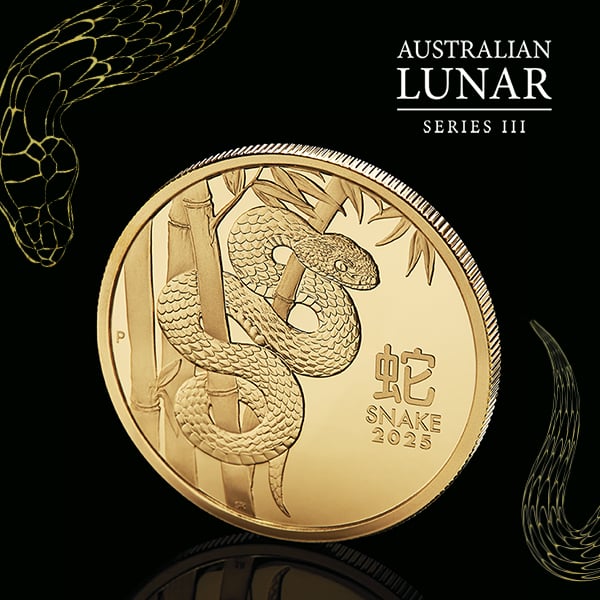Silver outperforms as metals continue to rise in USD

Silver outperformed gold by 13.7% in May 2020. That’s a bullish sign for precious metal investors.
Executive summary
- Gold and silver prices continued to rise in May, increasing by 1.02% and 14.70% respectively.
- The strong rally in silver saw the Gold to Silver ratio (GSR) fall back below 100.
- The Australian dollar (AUD) rallied by 1.40% vs the US dollar (USD) price. Gold closed the month below AUD 2,600 per ounce.
- Investments into physical gold and ETF inflows remained strong, continuing a period of elevated demand.
Full monthly review – May 2020
May 2020 was another positive month for precious metal investors, with gold rising by more than 1% in US dollar terms to finish the month trading at USD 1,728 per ounce. Silver had an even better month, increasing by nearly 15% in its largest monthly gain in almost four years to finish the month above USD 17.50 per ounce.
The increase in precious metals occurred despite the continued rise in equity markets, with the S&P500 increasing by 4.53% in May 2020 to close the month back above 3,000 points.
In this market update, we provide an overview of four trends for precious metal investors to follow:
- Silver’s recent outperformance relative to gold
- The rally in the Australian dollar
- Inflows into gold ETFs
- Bond market warning signals for investors
Silver is outperforming gold
This is reflected in a falling Gold to Silver ratio (GSR), which declined from a high of just over 120 in late March to 98 by the end of last month, a drop of almost 20%.
Silver typically outperforms gold to the upside and underperforms gold to the downside. As such, the strong rally in silver since late March is a positive sign for precious metal bulls, suggesting there may be further upside for both metals in the weeks and months to come.
Gold itself looks well supported, though we note it has fallen below USD 1,700 in the first few trading days of June.
How high will the Australian dollar go?
In late March the Australian dollar fell to USD 0.557, having declined from its end-2019 reading of USD 0.700. From that low, the currency rebounded approximately 20% to end May 2020 at USD 0.665.
The currency rebound has been driven by multiple factors including strong iron ore prices, the bounce in equity markets and growing investor optimism as governments outline a path out of the COVID-19 lockdown. General weakness in the US dollar, which has declined by roughly 5% against a basket of currencies since late March, has also contributed.
The rally in Australian dollars has meant that gold prices in local currency terms has stagnated since late March 2020, though it did at one point trade above AUD 2,700 per ounce. Whilst this may frustrate existing investors, the pullback provides a better potential entry point for those looking to increase their exposure to gold.
Indeed in the first few days of June we’ve seen further upside in the Australian dollar, with the currency pushing up beyond USD 0.69. This has put downside pressure on the local price of gold, which is now trading below the AUD 2,500 level.
Beyond this, we would not be surprised to see this Australian dollar rally stagnate, with downside risk in the months to come. Westpac Bank has a ‘fair value’ model for the Australian dollar which suggests the currency should be trading at USD 0.625.
Were the currency to fall to this level, it would boost the Australian dollar gold price back above AUD 2,750 given an increase of approximately 5% from current levels.
ETF demand is still strong
Whilst most clients at The Perth Mint prefer to buy their precious metals in physical form, gold ETFs are important to watch, as flows into and out of these products tend to be highly correlated to gold prices.
In May 2020, gold ETFs had another strong month of inflows, with more than 100 tonnes of metal being purchased through these products in the three weeks to 22 May (end May data is not yet available).
Year to date, holdings have risen by 602 tonnes, making 2020 the second strongest calendar year on record for gold ETF demand, even though we are only five months into the year.
The Perth Mint was again part of this trend, with holdings in its ASX-listed product, Perth Mint Gold (ASX:PMGOLD), rising by almost 4% in May. The product is now backed by more than 6 tonnes of gold and has a market value in excess of AUD 500 million.
The bond market doesn’t trust the stock market rally
In the first three months of the year, equity prices crashed and bond yields fell (ie. bond prices rose) as fears over the spread of COVID-19 spurred investors to dump risky assets in favour of perceived safe havens.
Across Q1 2020, the US 10-year government bond yield declined from 1.91% to 0.70%, something most market observers would see as natural occurrence given the unprecedented circumstances.
What is more interesting is the fact that bond yields have not risen during the aforementioned equity market rally from late March onwards.
If investors really were 100% convinced that we will find a smooth path out from the COVID-19 crisis, then one would have expected bond yields to increase (ie. prices to fall) over the past two months.
Many would also argue that an equity rally of this speed and magnitude should have seen gold fall.
However, bond yields have remained essentially flat whilst gold prices have risen by almost 20% since late March. This is a telling sign that investors are still concerned about the outlook for economic growth, the risk in equity markets or the potential for higher official inflation to rear its ugly head.
Should any of those outcomes occur, it will provide ongoing support for precious metal markets.
DISCLAIMER
Past performance does not guarantee future results. The information in this article and the links provided are for general information only and should not be taken as constituting professional advice from The Perth Mint. The Perth Mint is not a financial adviser. You should consider seeking independent financial advice to check how the information in this article relates to your unique circumstances. All data, including prices, quotes, valuations and statistics included have been obtained from sources The Perth Mint deems to be reliable, but we do not guarantee their accuracy or completeness. The Perth Mint is not liable for any loss caused, whether due to negligence or otherwise, arising from the use of, or reliance on, the information provided directly or indirectly, by use of this article.















